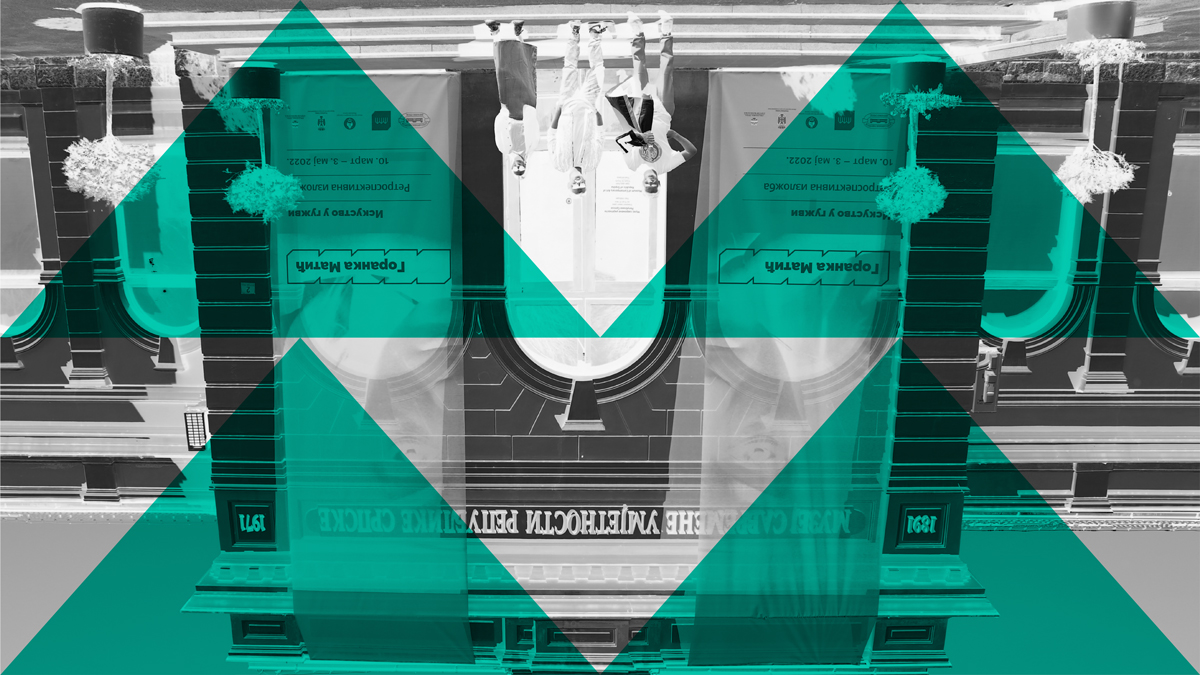The ReCulture project marks a significant milestone with the release of its handbook, offering invaluable insights into the process of redesigning cultural institutions. This comprehensive guide, born out of the collaborative efforts of the project’s team, aims to empower graphic designers with practical guidelines and recommendations for working with cultural entities.
Under the ReCulture initiative, four prominent cultural institutions – the Cultural Centre Trebinje (CCT), the Museum of Contemporary Art of Republic of Srpska (MoCARS), the Pavle Beljanski Memorial Collection (PBMC), and the Art Colony Danilovgrad (ACD) – underwent transformative rebranding processes. Spearheaded by a team of talented young designers, including Arijana Kadić, Milen Tišić, Luka Matić, Sonja Jovanović, Stefan Tankov, Đurđina Samardžić, Julija Radosavljević, and Snežana Bulatović, these institutions emerged with revitalized visual identities.
Set of recommendations for designers on how to design visual identity for cultural institutions
 The handbook, a culmination of the project’s endeavors, distills key lessons and best practices garnered from the ReCulture journey. It delves into fundamental questions surrounding redesign and the creation of new visual identities, providing designers with essential considerations and strategies.
The handbook, a culmination of the project’s endeavors, distills key lessons and best practices garnered from the ReCulture journey. It delves into fundamental questions surrounding redesign and the creation of new visual identities, providing designers with essential considerations and strategies.
Notably, the handbook sheds light on the collaborative nature of the redesign process, emphasizing the crucial role of institution employees alongside designers and management. By fostering open communication and trust, the handbook advocates for a holistic approach to cultural institution redesign, ensuring alignment with organizational goals and audience expectations.
Through a detailed exploration of preparatory activities, research methodologies, and collaboration frameworks, the handbook equips designers with the tools needed to navigate the intricacies of cultural institution redesign. It emphasizes the importance of understanding institutional context, audience dynamics, and logistical considerations in shaping effective design solutions.
Furthermore, the handbook underscores the iterative nature of the redesign process, emphasizing flexibility and adaptability in response to evolving needs and challenges. By embracing a collaborative and forward-thinking approach, designers can facilitate meaningful transformations that resonate with both institutions and their audiences.
Set of recommendation for cultural institutions on how to improve their communication and audience development strategies
 In a bid to embrace innovation and strategic repositioning, cultural institutions across Serbia, Montenegro, and Bosnia and Herzegovina are undertaking a transformative journey through rebranding. Led by insights from the ReCulture project, these organizations are not merely refreshing their visual identities but are strategically realigning themselves to better serve their communities.
In a bid to embrace innovation and strategic repositioning, cultural institutions across Serbia, Montenegro, and Bosnia and Herzegovina are undertaking a transformative journey through rebranding. Led by insights from the ReCulture project, these organizations are not merely refreshing their visual identities but are strategically realigning themselves to better serve their communities.
Rebranding transcends mere visual makeover; it’s a comprehensive process of introspection, organizational diagnostics, and strategic realignment. As Nada Arnaut, mentor at Cultural Centre Trebinje, asserts, “A thoughtful new visual identity could be a driving wheel for the institution.” It’s about embodying the institution’s mission, enhancing visibility, and forging stronger connections with the audience.
The handbook reveals how the organizations opt for rebranding to maintain leadership positions, mark new development cycles, regain lost visibility, strengthen audience relationships, or adapt to significant strategic shifts. This process isn’t just about changing logos; it’s about reaffirming values, refreshing approaches, and fostering innovation. Rebranding offers numerous benefits, including strategic direction, enhanced communication, better user experience (UX), and contributions to the local community. By critically evaluating their work and strengthening connections with stakeholders, institutions can pave the way for sustainable growth and community engagement.
The rebranding process unfolds through strategic analysis, stakeholder engagement, defining the brief, proposing solutions, and implementation. Find out why clear communication, adherence to timelines, and stakeholder involvement are crucial for successful execution, and how strategic alignment, research-based insights, participatory approaches, and environmental sustainability are foundational principles for successful rebranding. By embracing these principles, cultural institutions can navigate the complexities of rebranding while fostering innovation and community engagement.
As cultural institutions embark on the journey of rebranding, they not only redefine their visual identities but also reaffirm their commitment to innovation, sustainability, and community engagement. Through collaborative efforts and strategic foresight, these institutions are charting a path towards a vibrant and sustainable future.
As the ReCulture project concludes, the handbook stands as a testament to its enduring legacy, offering a roadmap for future collaborations and endeavors in the realm of cultural institution redesign. With its wealth of insights and practical guidance, the handbook empowers designers to embark on transformative journeys, shaping vibrant cultural landscapes for generations to come.
The comprehensive set of recommendations for designers and cultural institutions represents a significant milestone in fostering collaboration and innovation within the cultural sector. These guidelines will be disseminated widely to ensure their accessibility and impact.
For designers, the recommendations will be shared with educational institutions specializing in design, both locally and within the European Union. Additionally, local and EU-based design studios will receive this invaluable resource, empowering them to approach designing for cultural institutions with strategic insight and creativity.
Similarly, the recommendations tailored for cultural institutions will be distributed across the Western Balkans region through established networks such as the Balkans Museum Network and other local and regional organizations. By leveraging these platforms, the guidelines will reach a diverse array of cultural institutions, enabling them to enhance their communication strategies and better engage with their communities.
Stay tuned for updates on where to access these recommendations, as efforts are underway to ensure they are readily available to all stakeholders in the cultural ecosystem. Together, we can drive positive change and innovation in cultural institutions across the region.